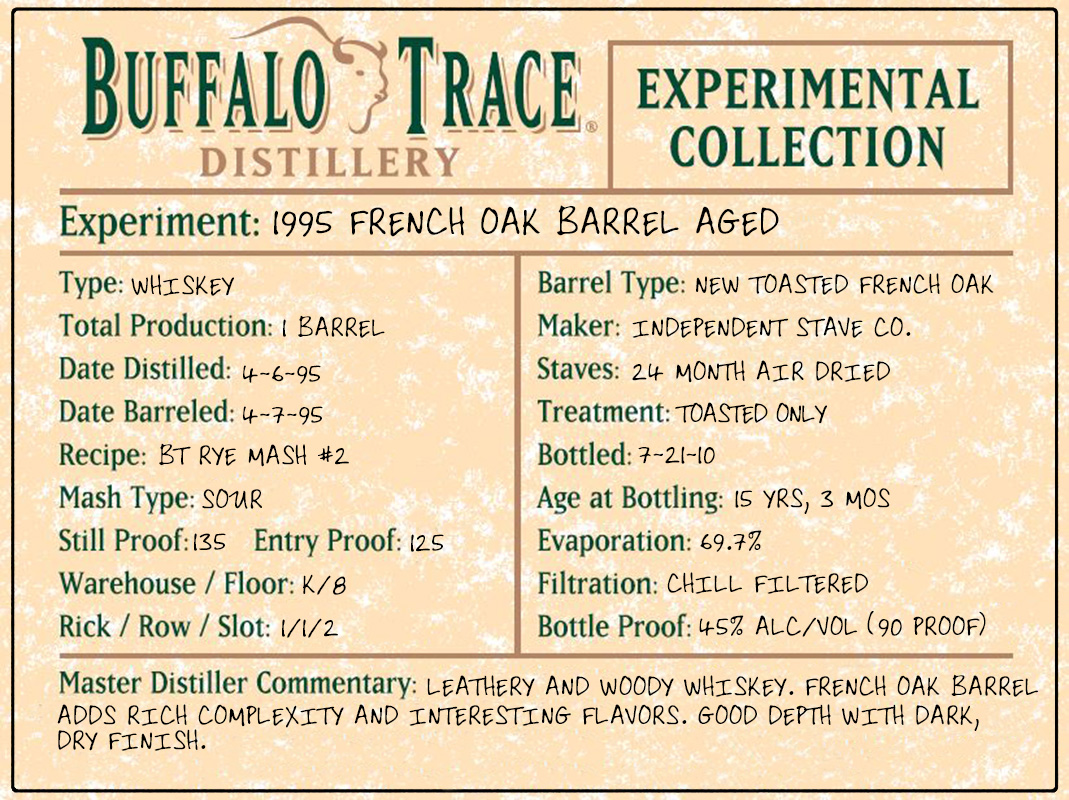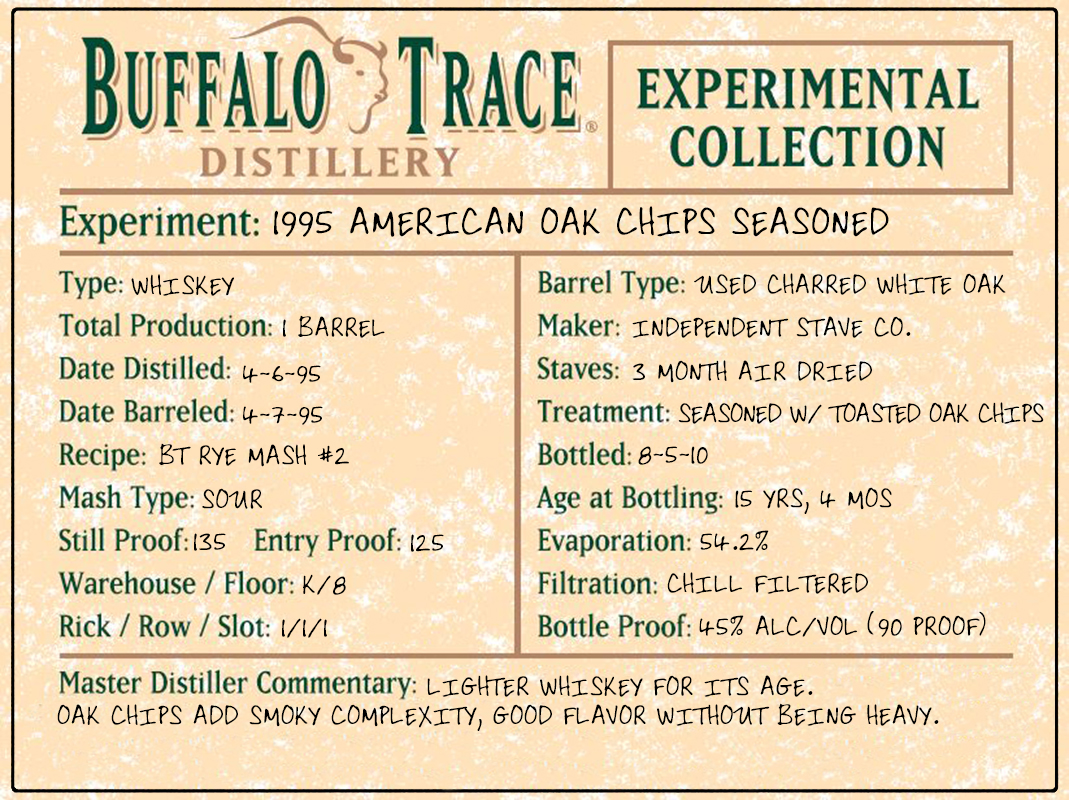2010 Releases
Release 8: Oak Variations
The variation of oak for constructing barrels undoubtedly has an effect on bourbon flavor. This experiment explored those effects by aging the same bourbon recipe in two different oak barrels, an unused toasted French oak barrel and a used American white oak barrel with charred white oak chips inside of it. Both whiskeys were aged for a little over 15 years and the resulting flavor profiles have distinct differences.
-
1995 French Oak Barrel Aged
This unused French oak barrel was filled on April 7, 1995 and bottled July 21, 2010. After more than 15 years and 3 months of aging, the new toasted French oak barrel added rich complexity and interesting flavors to this whiskey. The result is a leathery and woody whiskey that has a good depth with a dark, dry finish.

-
1995 American Oak Chips Seasoned
This new American oak barrel was filled on April 7, 1995. Toasted American white oak chips were added to the barrel at the start of its aging. After more than 15 years and 4 months of aging, this whiskey was bottled on August 5, 2010. Whiskey has a smoky complexity derived from interacting with the toasted oak chips. It is a lighter whiskey for its age and has a good flavor without being heavy.






